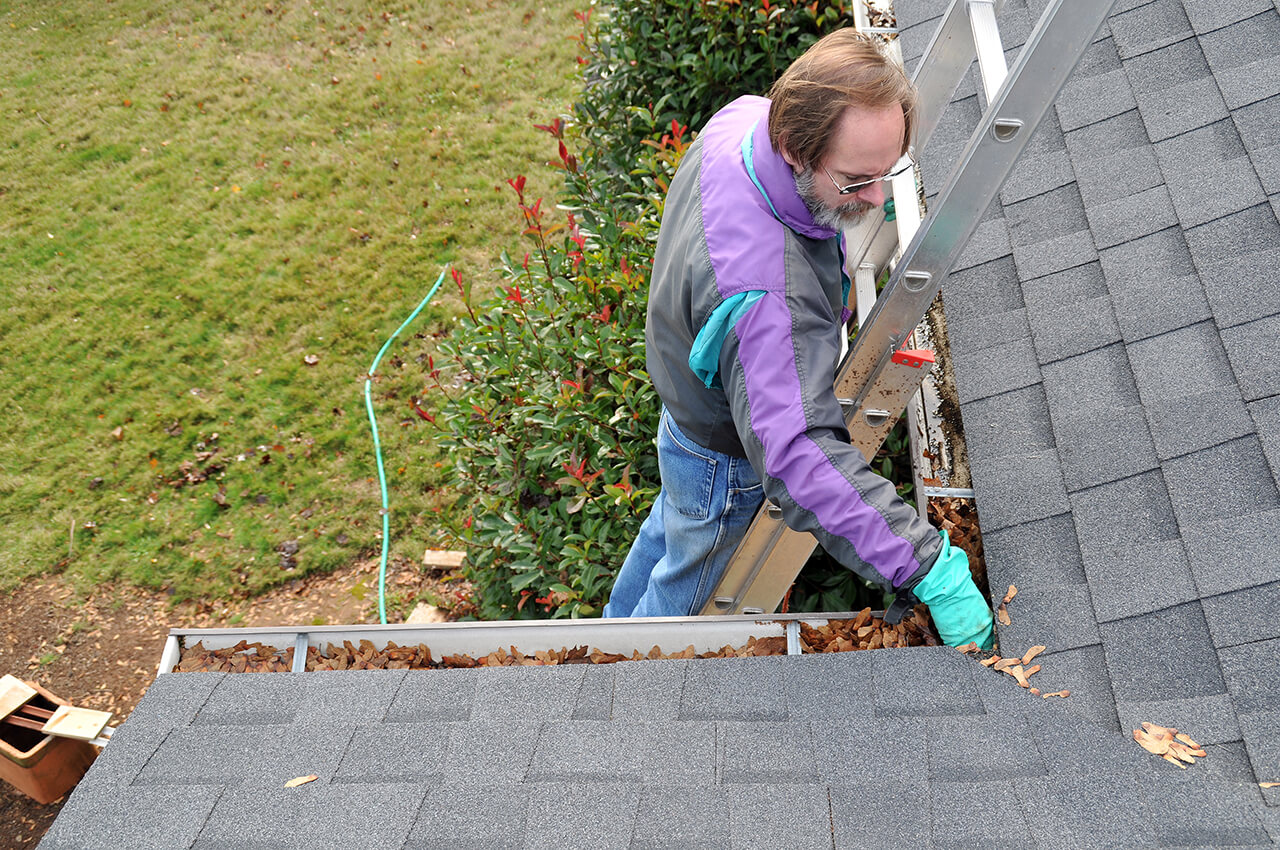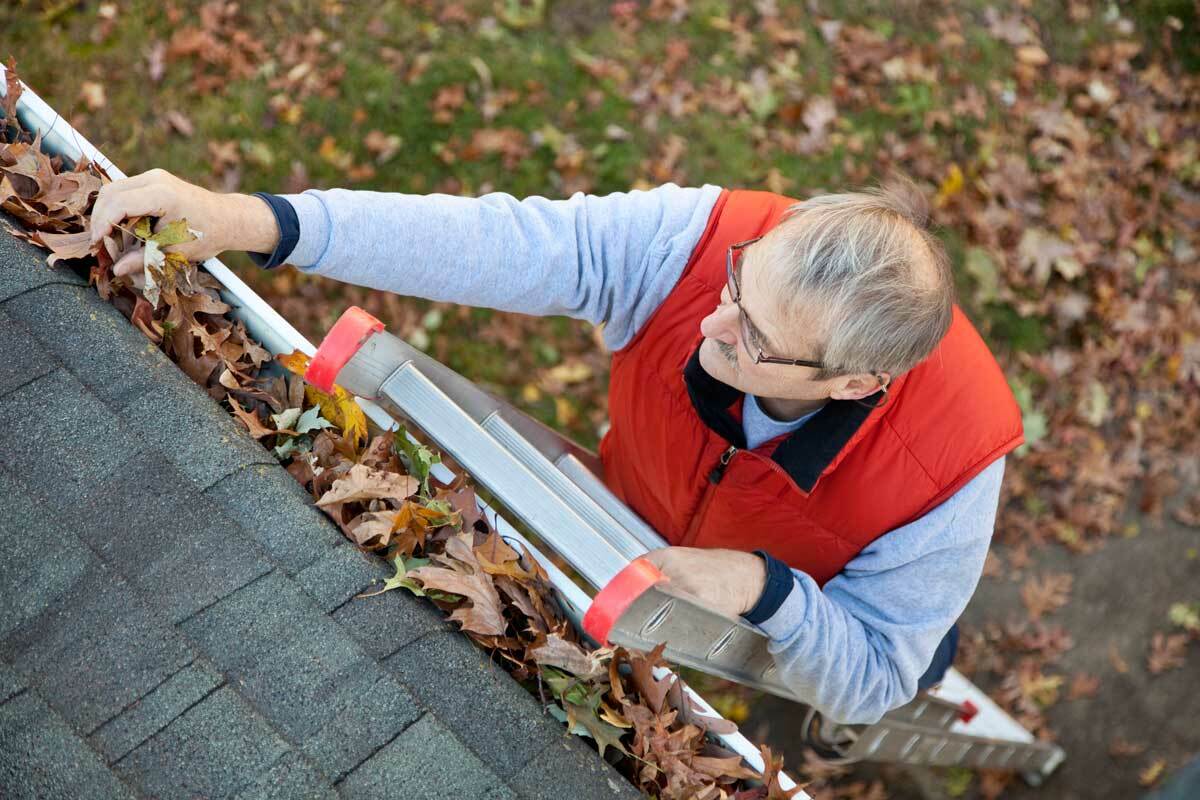Gutters are often overlooked when it comes to home maintenance, but they play a critical role in protecting your home from water damage. A properly functioning gutter system channels rainwater away from your roof, walls, and foundation, helping to prevent costly issues like flooding, mold growth, and structural damage. Regular gutter inspections are essential to ensure your system is working efficiently.
In this complete guide, we’ll walk you through the importance of gutter inspections, what to look for during an inspection, how to perform one yourself, and when it’s time to call in a professional.
Why Gutter Inspections Are Important
Gutters are exposed to the elements year-round, which means they can easily become damaged or clogged with debris. A clogged or damaged gutter system can lead to various problems, such as:
- Water Damage: Blocked gutters can cause water to overflow, leading to water damage on your roof, siding, and foundation.
- Pest Infestations: Clogged gutters can become a breeding ground for insects like mosquitoes, ants, and termites.
- Roof Damage: Water that doesn’t properly drain away can seep under shingles, causing rot and potentially leading to roof leaks.
- Foundation Issues: When water isn’t properly directed away from your foundation, it can seep into the ground, leading to soil erosion and foundation damage.
Regular gutter inspections allow you to catch these problems early and address them before they turn into expensive repairs.
When Should You Inspect Your Gutters?
Homeowners should aim to inspect their gutters at least twice a year—once in the spring and once in the fall. However, there are certain times when you should inspect more frequently:
- After a Storm: High winds, heavy rains, or snow can cause branches, leaves, and debris to accumulate in your gutters. Inspect your gutters after a storm to ensure that everything is clear and functioning.
- If You Notice Water Damage: If you notice signs of water damage on your roof, siding, or foundation, your gutters may not be doing their job properly. Perform an inspection to identify any issues.
- If Your Gutters Are Overflowing: If your gutters are overflowing during a rainstorm, it’s a clear sign that there may be a clog or damage that needs attention.

What to Look for During a Gutter Inspection
A thorough gutter inspection involves looking for signs of damage, wear, and clogging. Here are the key areas to check:
1. Check for Clogs and Blockages
Debris like leaves, twigs, and dirt can easily accumulate in your gutters and cause blockages. Clogs prevent water from flowing freely through the system, leading to overflow and water damage.
- Look for visible debris: Remove any leaves, twigs, or other debris that might be blocking the flow of water.
- Check the downspouts: Ensure the downspouts are clear of obstructions. You can check the flow of water by running a hose through them. If the water doesn’t flow through freely, there may be a blockage further down the line.
2. Inspect for Damage
Over time, gutters can become damaged due to wear and tear, extreme weather, or the weight of debris. Look for signs of damage such as:
- Sagging Gutters: Gutters that are sagging or pulling away from the roofline may have come loose or are overburdened with debris. This can affect the drainage of water and lead to further damage.
- Cracks and Holes: Small cracks or holes in your gutters can cause leaks. If left unchecked, they may grow larger and worsen the damage.
- Rust and Corrosion: Metal gutters, especially steel gutters, can rust over time. Check for signs of rust or corrosion, which may indicate that the gutters need to be replaced.
- Separation at Joints: The joints where sections of the gutter connect can separate over time, allowing water to leak out. Look for gaps or visible separation at these points.
3. Ensure Proper Alignment
Gutters should be properly aligned and sloped to direct water toward the downspouts. If your gutters aren’t sloped correctly, water can pool in certain areas, leading to overflow and water damage.
- Check for uneven pitch: Use a level to check if your gutters are sloping toward the downspout. A slight slope (about ¼ inch per 10 feet of gutter) is ideal for proper water flow.
- Look for low spots: If there are areas where water is collecting instead of flowing toward the downspouts, this could indicate a problem with the slope.
4. Inspect the Fascia and Soffit
The fascia and soffit are the boards that support your gutters and sit behind them. Inspect these areas for signs of damage, water stains, or rot, as this can indicate that water has been leaking behind the gutters due to clogs or damage.
- Look for rotting wood: If the fascia board is soft or discolored, it may have suffered water damage, often caused by overflowing gutters.
- Check for mold or mildew: If you see mold or mildew on the fascia or soffit, it could be a sign of ongoing water damage, which may require gutter repair or replacement.

How to Perform a Gutter Inspection
Performing a gutter inspection yourself can save you money and ensure that your gutter system is in good working condition. Here’s a step-by-step guide to help you conduct your own gutter inspection:
1. Gather the Necessary Tools
- Ladder (preferably with a stabilizer to prevent damage to your gutters)
- Gloves
- Garden hose
- Small trowel or scoop (for cleaning debris)
- Level (for checking alignment)
- Bucket or tarp (to collect debris)
- Flashlight (for better visibility in darker spots)
2. Set Up a Ladder Safely
Ensure your ladder is placed on level ground, and have someone hold the base of the ladder for added stability. Use a ladder stabilizer to protect your gutters and maintain a steady position while working.
3. Check for Clogs and Clean Gutters
Start by inspecting the gutters for any debris. If you find leaves, dirt, or other obstructions, use a trowel or scoop to remove them. Then, flush the gutters with a hose to ensure that water is flowing freely toward the downspouts.
4. Inspect for Damage
After cleaning the gutters, carefully inspect them for signs of damage, such as cracks, rust, or sagging. Also, check the downspouts to ensure water is draining properly.
5. Examine the Fascia and Soffit
Look closely at the fascia and soffit for any signs of water damage, rot, or mold. If you notice any of these issues, it may be time to repair or replace your gutters.
6. Test the Gutter Slope
Use a level to check the alignment of the gutters. If they’re not properly sloped, consider adjusting them to ensure water flows toward the downspouts.

When to Call a Professional
While you can perform a basic gutter inspection yourself, there are times when it’s best to call a professional. Consider hiring a gutter professional if:
- The gutters are too high or difficult to access: If you have gutters that are difficult to reach or work on, it’s safer to hire a professional to inspect them.
- You notice extensive damage: If you spot significant damage such as large cracks, rust, or sagging gutters, a professional can help assess whether repairs or replacement is necessary.
- You need to install or replace gutter guards: Installing gutter guards or performing more advanced maintenance is often best left to the experts.
Conclusion
Regular gutter inspections are essential for maintaining the health of your home’s drainage system. By checking your gutters for clogs, damage, and proper alignment, you can prevent water damage, pest infestations, and costly repairs. Performing a gutter inspection twice a year and after storms can save you time and money in the long run, while ensuring your gutters continue to protect your home. If you notice significant issues, don’t hesitate to call a professional for assistance to keep your gutters in optimal condition.

